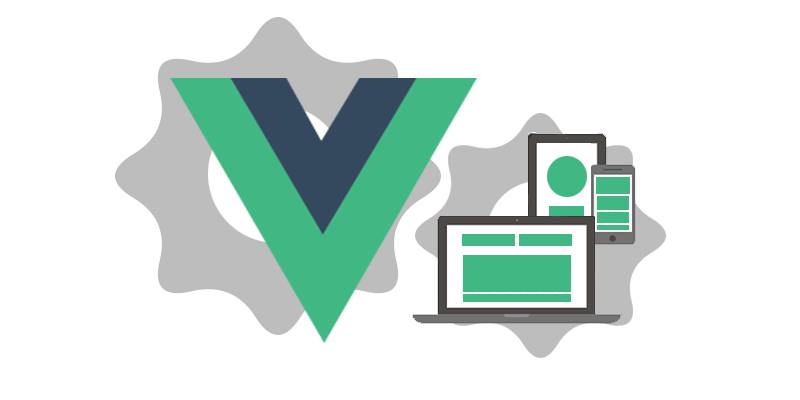Introduction
VueJS is a framework which lets you build single page applications (SPAs) using HTML, CSS, and JavaScript. It uses data binding to seamlessly bind the different components together and it also has built-in features such as event handling and state management, so you don’t have to worry about writing code for these things! In this article we’ll be going through some of the most common questions that interviewers will ask when hiring candidates for remote positions with VueJS experience
Q1. What is VueJS?
VueJS is a progressive framework for building user interfaces. It allows you to build apps with data-binding, directives and components (similar to React) and it’s also easy to integrate with the existing JavaScript ecosystem.
VueJS was created by Evan You, who was looking for an alternative to AngularJS (which he used previously). The first thing that stood out about Vue was its simplicity; it doesn’t require any special syntax or libraries like jQuery in order to work properly. This makes it very easy for developers who are new at web development because they don’t have any previous experience using Angular or other similar frameworks
Q2. What are the advantages of using VueJS?
VueJS is a progressive framework, meaning that it can be used in different contexts. The developers of this framework have made sure that it is not only easy to learn but also extensible and flexible.
You will love using the VueJS because it offers you an opportunity to build your application in short time with minimal efforts so as not to waste your budget on hiring expensive developers for years.
Q3. What type of applications can be built using VueJS?
VueJS can be used to build any type of application, but it is particularly suited for building user interfaces. It also makes it easy to compose reactive components.
Q4. Is it required to add a reference to a framework in HTML?
Yes, it is not required to add a reference to a framework in HTML. You can just include the script tag in your HTML file and that’s it! However, if you want to use VueJS with other JavaScript libraries (e.g., jQuery), then you need an additional step and include those libraries individually via CDN links as well.
Q5. How can you create an instance of VueJS?
How can you create an instance of VueJS?
You can use the new keyword in JS to create a new instance of VueJS:
- new Vue({}) to create a new instance
- new Vue() to set up the root element and all templates as if they were defined on the global scope (if no options passed)
Q6. Which browser supports VueJS without any polyfills?
- Chrome, Firefox and Safari. Because Vue was developed by an open source community, it can be used in all browsers that are compliant with ECMAScript Harmony (aka ES6). The only exception to this is Internet Explorer 11+, which supports ES5 syntax but does not support Web Components.
- Edge and Opera. Both platforms support both the Vue and React Native libraries on their native code base. They also have built-in tools for testing using Jest or WebDriver depending on which platform you’re using* Vivaldi: This browser supports ES6+ syntax along with CSS Custom Properties that allow developers to write in TypeScript without having to worry about polyfills or transpilers like BabelJS.* Android Browser: It supports both JSX tags but not Pug/Webpack build system yet.* iOS Safari: This browser doesn’t support Typescript at all so if you want your app running on iPhone X then it would be best if there are no bugs etc..
Q7. What is data binding?
Data binding is the process of synchronizing data between the model and view components. In VueJS, data binding is done through the use of reactive programming.
VueJS uses a reactive data binding system that allows you to bind data to DOM elements and updates the DOM automatically when underlying values change.
Q8. How can you bind a property or attribute using v-bind directive with the shorthand syntax?
v-bind is a vuejs directive which bind one or more attribute. Also it’s bind component prop to an element. Using v-bind you can bind dynamic attribute also.
Example
<!-- bind an attribute -->
<img v-bind:src="imageSrc" />
<!-- shorthand -->
<img :src="imageSrc" />
<!-- shorthand dynamic attribute name -->
<button :[key]="value"></button>Q9. How can you create a class or style binding by dynamically toggle between several classes?
The v-bind:class directive is used to set the class name of an element. It can be used with any element that has an HTML5 data- attribute and will be applied only in the context of a single page load or after a document has finished loading.
Example
<button v-on:click="show = !show">Click to Toggle</button>
<h1 :class="{active: show, error: !show}">Developer Diary</h1>
<script>
var app = new Vue({
el: '#app',
data: {
show: true
}
})
</script>Q10. Which directive is used for conditional rendering of elements?
using v-if and v-else we can do conditional rendering.
Example
<h1 v-if="awesome">Vue is awesome!</h1>
<h1 v-else>Oh no 😢</h1>Q11. How can we handle events in VueJS? Explain with examples.
VueJS has a built-in mechanism for binding events. An event handler is an object that receives the event from an element and can then do something with it.
For example, you could bind an onClick callback to your element and make it open a new window in your browser by calling window.open() when this button is clicked:
<template>
<div id="app">
<p>
Click this button
</p>
<button
role="link"
@click="openInNewTab('https://www.developerdiary.in')"
>
Click
</button>
</div>
</template>
<script>
export default {
methods: {
openInNewTab(url) {
window.open(url, '_blank', 'noreferrer');
},
},
};
</script>Q12. What is lifecycle hooks in VueJs and its importance? Explain with examples.
Lifecycle hooks are a set of methods that are executed at different points during the life cycle of a Vue component.
In VueJS, you can use lifecycle hooks to perform certain actions at specific points in time by defining them as arguments to your components. The following example shows how we can use the beforeMount() method:
<script>
export default {
beforeMount() {
console.log('beforeMount hook called');
}
}
</script>Following are eight lifecycle hooks in Vue JS:
- beforeCreate
- created
- beforeMount
- mounted
- beforeUpdate
- updated
- beforeDestroy
- destroyed
Q13. What are the benefits of using components in VueJs and explain how they help to manage complex applications better than alternatives?
Components are reusable, modular and composable. They help to manage complex applications better than alternatives such as global namespaces.
A component can be reused in multiple places without having to copy and paste code. This makes it easier for developers who work with large teams on projects as they don’t need to worry about how their code will look across different apps or frameworks
Related Articles
PHP OOPS Interview Questions And Answers (2022)
Latest MySQL Interview Questions And Answers
PHP Array Interview Questions And Answers
JavaScript Interview Questions And Answers
Node.Js Interview Questions And Answers


